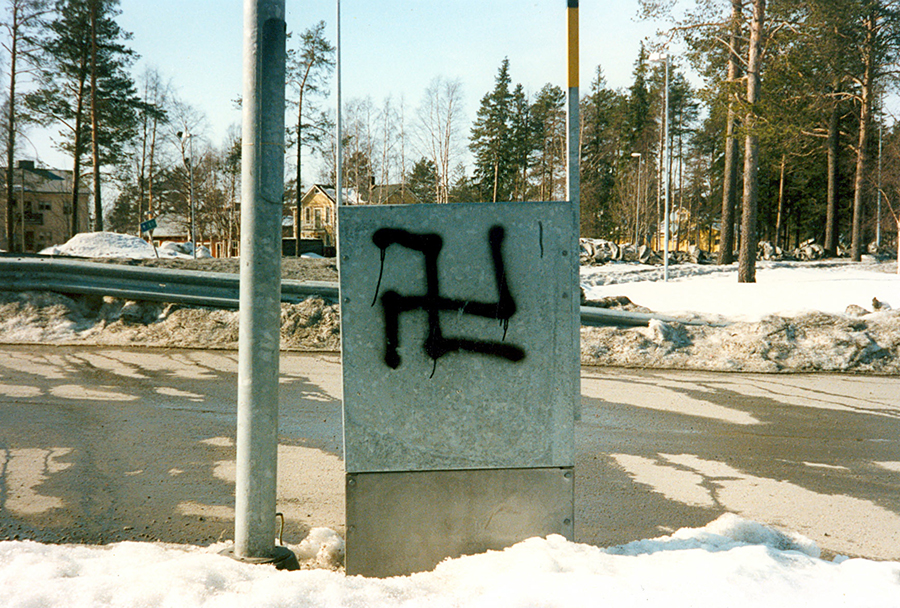
Photo by Bart Everson on Flickr
There is no greater visual slur than the swastika. Initially a symbol of good fortune, over time it has devolved into an aggressive graphic device that even now represents hatred towards Jews and other marginalized communities—a kind of crude cultural shorthand for anger, hostility, and epic intolerance. Hate groups have employed swastika-like signs since the defeat of the Nazis during the Second World War, and even now persists as an emblem of suprematism, an expression of intolerance and propaganda. To focus on the swastika is to intensify its power and underscore its criminality, but to ignore it is to allow the people and ideas it represents to go unchecked.
The swastika does not to have to be well-designed to make its mark or to evoke visceral reactions: a simple scratch of the hooked cross speaks volumes. Designers—myself included—have frequently observed that the Nazis were great design propagandists. (The truth is, they were propagandists, period.) The graphic design they produced helped to amplify a vitriolic and ongoing campaign built entirely on the nefarious (and surprisingly effective) lie that they were at war with a Jewish conspiracy—a claim that served to antagonize American democrats, English plutocrats, and Russian Bolsheviks. Indeed, by controlling the press—and by manipulating public words and images—the Nazis convinced gullible Germans (and others) that the answer lay in eradicating—in actually exterminating—the enemy. Through the Propaganda Ministry for Information and Enlightenment, the Nazis ensured that truth was expunged, logic was ignored, and news was legitimized only when derived from and vetted by elite sources. From daily newspapers to weekly posters, graphic design served to both frame and bolster a kind of visual language that vilified the enemy. (When fact is replaced by fantasy, fact is fantasy.) True, such forms of graphic expression were highly effective, yet the ultimate key to their power lay in the swastika itself—bold and imposing, it soon became the imprimatur of a man whose professed purpose was to make Germany great again.
Despite being outlawed in Germany today, the swastika endures nevertheless in some form in every country where racial (and particularly Jewish) hatred exists—including the United States, where it is, regrettably, still scrawled on public walls—from subways to synagogues—a trenchant reminder of militance, intolerance, and the visual language of hate.
